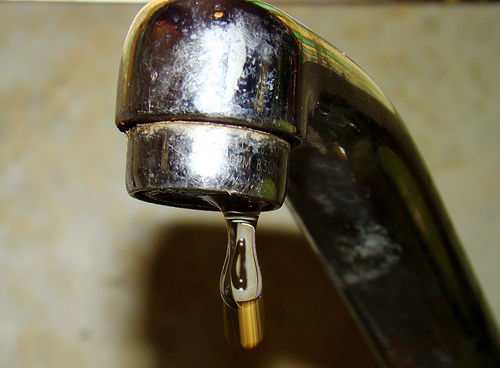Leaky faucets are definitely a nuisance, but it’s a much bigger problem than perhaps many people realize. Even in small drops, all that water can amount to several gallons wasted per day if kept unchecked. It’s a matter that needs attention if one wants to save on their water bills. But if one wants to save on their plumbing bills as well, one may as well learn how to fix a leaky faucet by themselves.
In order to fix a leaky faucet, one should first inspect the faucet to see if its nuts are loose. Leaking water at either the faucet handle’s base or the packing nut area could be a sign that the faucet has a loose connection. If this is the case, it can be repaired by merely tightening the loosened nuts, as well as the nut situated under the handle of the faucet, with the use of an adjustable wrench. Another possible cause of the leakage could be due to washers that wore out because they had not been installed properly or the faucets that they had been installed in are too small.
The faucet valves or the main water supply to the bathroom and the sink are next turned off, and then turned counterclockwise so that the packing nut found either below or within the individual handles of the faucets will be loosened up. The cover of the bathroom faucet’s decorative handle should be removed. Keep twisting and turning the faucet handle until the entire valve can be pulled out.
Find the old washer, usually situated at the valve unit’s bottom, and then remove the screws holding it. Use the old washer’s size as a guide for getting a replacement washer that has the same size as the old one. Don’t forget to get new screws to replace the old ones. Afterwards, the valve unit is placed into the faucet, and the handle is turned to the correct position prior to beginning the tightening procedure.
Start tightening the packing nut, after which the water is turned back on as before. Check the newly-installed faucet for any sign of leaking. If leakages still occur, it could be because of the washer’s size, and it may have to be replaced with a new washer in another size. In order to avoid damaging the faucet’s soft metal parts, the jaws of the wrench or pliers being used should be wrapped in either duct tape or masking tape.
Before one begins to fix a leaky faucet, the drain should be closed to prevent any parts from slipping down into it. When disassembling certain parts of the faucet, one should make certain that they know how to put them back together once they are through. Use heatproof plumber’s grease in lubricating threads in order to increase its sea level. Keep in mind that washers situated on handles for controlling hot water tend to wear out 2 times faster than those for the cold water controls.



